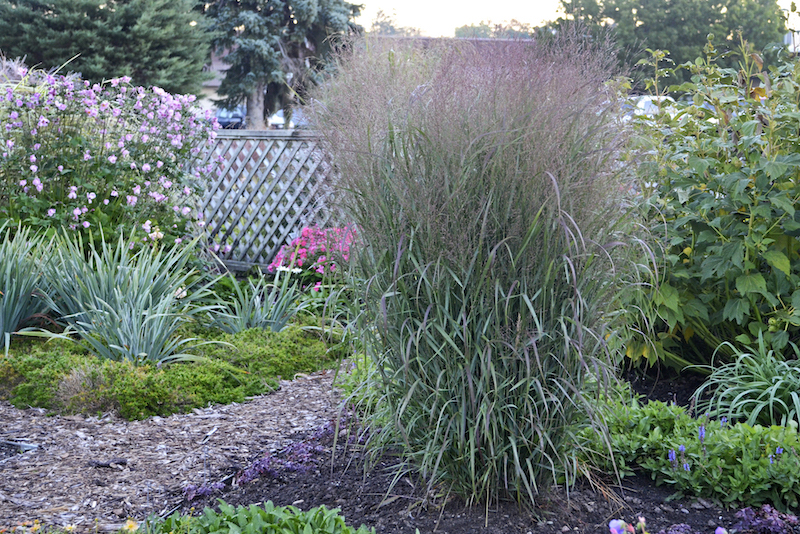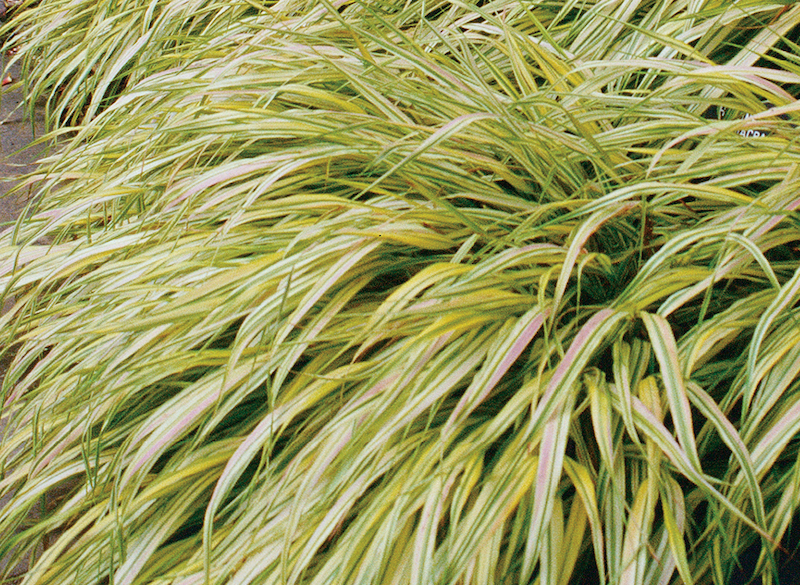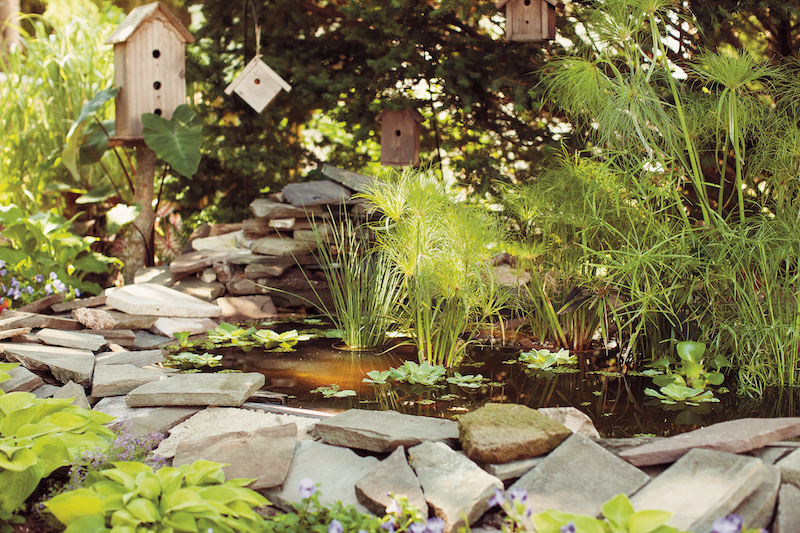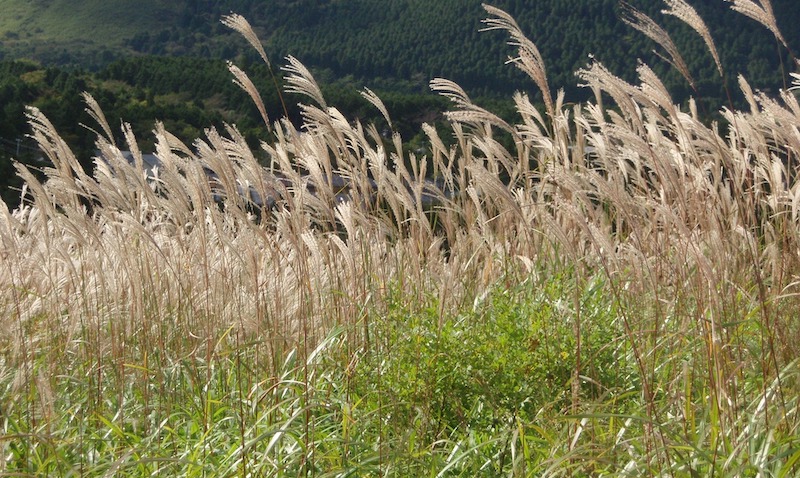Ornamental grasses serve many purposes within different landscapes. Whether you have an area in need of tall and full landscape fillers, a spectacle plant, or a border plant amongst your plant beds – ornamental grasses are great plants to incorporate into your home or commercial landscape. Let’s touch a bit on the differences in each of the following types of ornamental grasses.
Fountain Grass
Fountain Grass plants provide many different colors of foliage, dependent on the variety. Featuring soft plumes of seeds, Fountain Grasses are typically used as border or spectacle plants amongst landscapes, but provide more than just a pretty plant to look at outdoors. The plumes and foliage can be cut and used in floral arrangements, especially for weddings and formal events. These medium-large plants are wonderful as singular additions to your landscape or planted en masse to create a screen.
Enjoy Fountain Grass in many different shades of colors and varying sizes year round, Although in most zones this plant’s foliage dies back close to its roots, its foliage can still be appealing! Featuring light tan or darker brown foliage during its off-season, your yard will have interest — even in the dead of winter. Bonus: save the plumes by hanging them in boughs in a cool, dark space until fully dry and use for accent decor.

Switch Grass
Switch Grass features hundreds of thin stems with light and airy plumes. It has an incredible fine texture to contrast large or bold-leafed plants or even sharp edges like rocks. Almost any landscape can benefit from the softening effect of Switch Grass. Use this medium-sized plant for mass planting in borders or for a singular focal point.
Switch Grass provides both ornamental value and erosion control. Even better, your small local wildlife will use its dense foliage for cover. Since Switch Grass is drought tolerant, your yard and wallet will thank you for including this grass!

Japanese Forest Grass
Japanese Forest Grass is a fantastic addition that adds a waterfall-like effect to your landscape. Colors vary from bright green, variegated, golden and even medium green with red. This is a slower growing, medium-large perennial that continually looks better every year.
Spreading by rhizomes, the Japanese Forest Grass will fill in its surroundings and cascade over walls, slopes, and rocks. Thriving in environments that feature afternoon shade, this is a great filler plant that will make the shadier areas of your landscape pop. Use Japanese Forest Grass for border planting, ground cover, and shade gardens. With its bright and bold colors, this plant will create an aesthetically pleasing addition.

Sedge Grass
Sedge Grass, known by the scientific name Carex, is a smaller, more compact variety of ornamental grass. Colors vary from deep maroon, bright green, golden, and variegated. Typically found in border planting, Sedge Grass is a staple to many landscapes. You’ll typically find it planted amongst smaller perennial flowers, along walkways, or atop retaining walls. Sedge Grass is a quick growing plant that fills in nicely, especially in a newly planted landscape.
So what makes Carex Grass stand out? The height of this plant ranges anywhere from 12”-36”, depending on the variety. This ornamental grass thrives in full or partial shade, providing the area in which it resides with beautiful colors. With its drought tolerance, quick growth, and dense growing habit, sedge grass is widely used for ground covers and living mulch within areas that are sparsely planted. This plant is also used for erosion control along hillsides in shady areas. Its benefits are numerous including its good looks.
Border planting and ground cover are the two primary uses for sedges, but that doesn’t mean there aren’t other uses! Sedge Grass is commonly used to make rope and many different textiles. It is used to make baskets, woven from the leaves and rhizomes. Due to its quick growth, it’s easy to see why this plant is widely used in the landscape.

Egyptian Papyrus
Egyptian Papyrus is commonly found in bogs, woodland settings and amongst water gardens. A lover of moist and rich soil, this medium-large plant thrives alongside water sources. The foliage features reed-like stems that are typically the thickness of a pencil or larger. On top of these stems are numerous branch-like leaves, creating the unique foliage that resembles a firework. You can quite literally add a “pop” to your landscape. This is a plant that also loves warmer climates, so be sure to plan accordingly when adding to your landscape.
Although Egyptian Papyrus' unique foliage earns itself a place in many settings, its fiber has a long history of usefulness. Native to Africa, this plant has long been used to make writing parchment. Ancient Egyptians harvested the plant’s fiber by cutting open the stems, scooping out the pulp and mending it together to create paper. Egyptian Papyrus also looks amazing in floral arrangements.

Maiden Grass
Maiden grass, which falls under the genus Miscanthus, is a majestic ornamental grass with long seasonal interest. In late summer, it sends up tall stems adorned with light pink plumes. The plumes fluff out and dry to a light tan color.
This is a warm-season grass that goes dormant over winter, but the dried plumes can be left in place all winter for beautiful texture and vertical interest. Cut this grass down to a few inches above ground level in spring.
Maiden grass varieties are available in a range of colors, textures, and heights through the nursery trade. Some of the dwarf varieties only reach 2 - 3 feet tall, while the giant types can reach up to 12 feet. Many varieties are variegated with narrow leaves, such as 'Morning Light'; others, like 'Cosmopolitan', have wide strappy leaves that nicely contrast fine-textured plants.
All maiden grasses add movement and sound to the landscape as the wind blows through the leaves. This element is often ignored in landscape planning, but a garden that can stimulate all 5 senses is truly magical to experience.

Ornamental grasses come in many different forms, textures, colors and even uses. Although there are so many more varieties that we can touch on, we hope this provides you with the knowledge needed to best plant out your landscape. We hope you thoroughly enjoy planting these gems in your happy space!
 |
Author Chris Link - Published 03-07-2022 |
